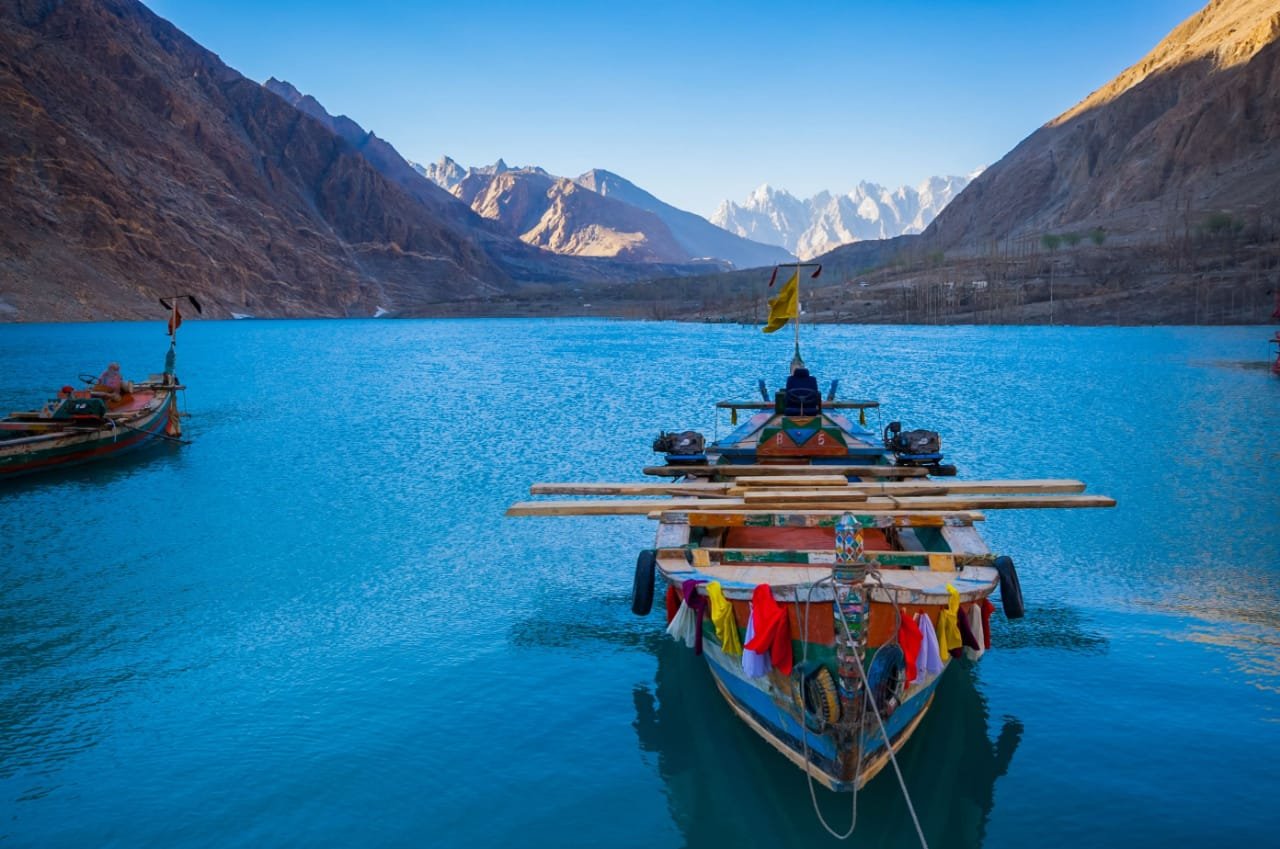Introduction
Tourism is a complex industry that has both positive and negative impacts on destinations. While it can bring economic benefits and cultural exchange, there are also negative aspects that need to be considered. In this blog post, we will explore some of the reasons why tourism can be seen as bad and the potential consequences it can have on local communities and the environment.
One of the main reasons why tourism can be perceived as negative is the issue of overtourism. Overtourism occurs when there is an excessive number of tourists in a particular destination, leading to overcrowding, strain on resources, and degradation of the natural and cultural heritage of the place. This phenomenon is often fueled by factors such as cheap air travel, the rise of online travel booking platforms, and the increasing popularity of “bucket list” destinations.
When a destination becomes overcrowded with tourists, it can lead to a range of problems. Local residents may feel overwhelmed by the influx of visitors, as their daily lives are disrupted by the constant presence of tourists. This can create tensions between locals and tourists, as well as a sense of loss of identity and cultural erosion. Additionally, the increased demand for accommodation, transportation, and other tourist services can put a strain on the local infrastructure, leading to congestion, pollution, and increased living costs for residents.
Furthermore, the natural environment can suffer as a result of overtourism. Popular tourist sites often experience increased foot traffic, which can lead to erosion, damage to vegetation, and disturbance of wildlife habitats. In coastal areas, the construction of hotels and resorts can contribute to beach erosion and harm fragile marine ecosystems. Additionally, the excessive use of water resources by hotels and tourists can deplete local water supplies, especially in arid regions.
Another negative consequence of tourism is the issue of cultural commodification. When tourists visit a destination, they often seek out authentic cultural experiences. However, this demand can lead to the commodification of local traditions, customs, and artifacts. In an attempt to cater to tourists’ expectations, local communities may alter or even abandon their own cultural practices, replacing them with staged performances and mass-produced souvenirs. This can result in the loss of cultural diversity and the erosion of traditional ways of life.
Moreover, the economic benefits of tourism are not always evenly distributed among the local population. In many cases, large multinational corporations dominate the tourism industry, leaving little room for small businesses and local entrepreneurs. This can lead to a concentration of wealth in the hands of a few, while the majority of the population remains economically marginalized. Additionally, the reliance on tourism as the main source of income can make destinations vulnerable to economic downturns and fluctuations in the global travel market.
In conclusion, while tourism can bring economic benefits and cultural exchange, it is important to recognize and address the negative impacts it can have on destinations. Overtourism, cultural commodification, environmental degradation, and economic inequality are just some of the consequences that need to be considered and managed in order to ensure sustainable and responsible tourism practices.
1. Overcrowding and Environmental Impact
One of the main concerns about tourism is the issue of overcrowding. Popular tourist destinations often experience a high influx of visitors, especially during peak seasons. This can lead to overcrowded attractions, congested streets, and long queues, which can negatively impact the overall experience for both tourists and locals.
Moreover, the environmental impact of tourism cannot be ignored. Increased tourism can put a strain on natural resources, such as water and energy, leading to depletion and pollution. The construction of hotels, resorts, and other tourism infrastructure can also contribute to deforestation, habitat destruction, and loss of biodiversity.
Overcrowding not only affects the quality of the experience for tourists but also has detrimental effects on the local community. The increased number of visitors can put a strain on the local infrastructure, including transportation systems, waste management, and public facilities. This can lead to a deterioration in the quality of life for the local residents, who may have to deal with increased noise levels, traffic congestion, and a decrease in the availability of public spaces.
Furthermore, the environmental impact of tourism goes beyond the immediate effects of overcrowding. The high demand for accommodation and amenities in popular tourist destinations often leads to the construction of new hotels, resorts, and other tourism-related infrastructure. This can result in the destruction of natural habitats, such as forests and wetlands, to make way for these developments. The loss of these ecosystems not only disrupts the balance of the local environment but also threatens the survival of numerous plant and animal species.
In addition to habitat destruction, the construction and operation of tourism infrastructure can also contribute to pollution. The increased demand for water and energy in tourist destinations often leads to overextraction of water resources and increased use of fossil fuels. This can have a detrimental impact on the local environment, including the depletion of water sources, increased air pollution, and the emission of greenhouse gases.
To mitigate the negative impacts of overcrowding and environmental degradation, sustainable tourism practices are crucial. This involves promoting responsible travel behavior, such as reducing waste, conserving water and energy, and respecting local customs and traditions. Additionally, governments and tourism authorities should implement regulations and policies that limit the number of visitors to sensitive areas and ensure that tourism development is carried out in an environmentally sustainable manner.
2. Cultural Dilution and Commodification
Tourism can also have a negative impact on local cultures and traditions. As destinations become more commercialized and cater to the preferences of tourists, there is a risk of cultural dilution and commodification. Local customs and traditions may be altered or even abandoned in favor of more profitable tourist activities.
For example, in some popular beach destinations, traditional fishing villages have transformed into tourist resorts, with the local fishermen abandoning their traditional way of life to cater to the demands of the tourism industry. This shift not only affects the livelihoods of the fishermen but also erodes the authenticity of the destination, as the genuine cultural experiences that once attracted visitors are replaced by manufactured ones.
Moreover, the commodification of culture in tourism can lead to the exploitation of cultural heritage. Traditional crafts and art forms may be mass-produced and sold as souvenirs, losing their authenticity and cultural significance. Take, for instance, the case of indigenous communities who rely on their traditional crafts as a means of income. When these crafts are mass-produced and sold in tourist markets, they lose their uniqueness and become mere replicas of the original, depriving the artisans of their livelihoods and undermining the cultural value of their creations.
This commodification of culture not only affects the local communities but also the perception of the destination itself. When tourists are presented with a shallow representation of a destination’s heritage, they may leave with a distorted understanding of its true cultural identity. This can perpetuate stereotypes and misconceptions, further contributing to the erosion of cultural diversity.
Therefore, it is crucial for destinations to strike a balance between catering to the needs of tourists and preserving their cultural heritage. Sustainable tourism practices that involve the local communities in decision-making processes and prioritize the protection of cultural traditions can help mitigate the negative impacts of tourism on cultural dilution and commodification. By promoting authentic cultural experiences and supporting local artisans, destinations can ensure the preservation of their cultural identity while still benefiting from the economic opportunities that tourism brings.
3. Economic Dependence and Inequality
While tourism can bring economic benefits to a destination, it can also create dependence and inequality. In many cases, local economies become heavily reliant on tourism, which can be problematic when the industry experiences a downturn or faces competition from other destinations.
Moreover, the benefits of tourism are often concentrated in the hands of a few, leading to income inequality and a widening wealth gap. Local communities may not have equal access to the economic opportunities generated by tourism, resulting in a divide between those who directly benefit from the industry and those who do not.
This economic dependence on tourism can be particularly challenging for destinations that lack diversification in their economy. When a large portion of a local economy relies on tourism, any negative impact on the industry can have severe consequences. For example, if a natural disaster or a global economic crisis occurs, the sudden decrease in tourist arrivals can lead to significant job losses and a decline in overall economic activity.
In addition, the concentration of tourism benefits in the hands of a few individuals or companies can exacerbate income inequality. This is because the profits generated by tourism-related businesses often flow to large hotel chains, international travel agencies, and other multinational corporations. These entities may have limited connections to the local community and may repatriate most of their earnings, leaving little behind for local residents.
The unequal distribution of tourism benefits can further widen the wealth gap within a destination. Local residents who do not directly participate in the tourism industry may find it increasingly difficult to afford housing, education, healthcare, and other basic necessities due to rising prices and limited job opportunities in other sectors.
Addressing economic dependence and inequality in tourism requires a multi-faceted approach. Local governments and tourism authorities can work towards diversifying the local economy by promoting other industries and attracting investments that create employment opportunities beyond the tourism sector.
Furthermore, it is crucial to ensure that the benefits of tourism are shared more equitably among the local population. This can be achieved through policies that encourage the development of small and medium-sized enterprises (SMEs) owned by local residents, as well as promoting community-based tourism initiatives that directly involve and benefit local communities.
By reducing economic dependence on tourism and promoting a more inclusive distribution of its benefits, destinations can mitigate the negative impacts of tourism and create a more sustainable and equitable future for their communities.

